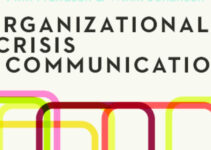We all have engaged in and experienced different types of conflicts and disagreements in the workplace. If you are playing the leadership role, then it is the leadership’s responsibility to step in and save the working environment from becoming toxic. In order to keep the work environment safe, positive, and productive, you should play a leadership role in managing conflicts. Today, we’ll discuss strategies to resolve conflict in the workplace; causes, required skills and expertise, the role of emotional intelligence, and the best ways how to handle conflict in the workplace.
Causes of Conflict in the Workplace
- Poor allocation of roles and responsibilities of employees
- Issues with time management resulting in delays
- Unclear performance expectations
- Poor communication among team members
Skills and Expertise in Conflict Resolution
- Open and effective communication skills with clear body language and maintaining eye contact
- Empathic, compassionate, and self-aware attitude to comprehend the emotions and pain of the affected party
- Problem-solving and decision-making skills to recognize the root cause of the problem and ask the right questions
Role of Emotional Intelligence
Some employees and team members have the expertise to get under the skin of their opponents. In other words, they know how to manipulate the emotions of others, and it gives them a higher level of satisfaction when others lose control over themselves. Training and learning programs play a key role in teaching and educating employees and team members about managing their emotions. It is because becoming angry, losing control over themselves, yelling, and name-calling would get them in trouble.
Emotional intelligence allows you to gain control over yourself on what you say, do, and how you would react. They may keep and control resentment inside them; they should appear calm and relaxed outwardly and open interactions to resolve conflicts.
Top Strategies to Resolve Conflict in the Workplace
Let’s discuss the top strategies to resolve conflict in the workplace and how to handle conflicts in the workplace; they’re as follows;
Addressing Conflicts
Avoiding the problems, issues, and conflicts in the workplace is not a good strategy, rather it aggravates the situation and causes potential lawsuits. Employees and team members would feel unimportant, not valued, bullied, and disappointed. However, companies and the management should follow the proactive strategic approach while dealing with any potential issues; they should take necessary steps to resolve problems.
Diagnosing and Clearing the Cause of Conflict
Management should take some time to diagnose the root cause of the problem and consult from multiple sources; instead of relying on the rumors and few sources. Misunderstanding and misinterpretation would aggravate the situation; rather you should ask the right questions to the right people.
Communicating and Engaging with All Parties
In order to diagnose the root cause of the problem, you need to talk directly to the parties involved in the conflicts. First, you should talk to them separately and understand their views; and then talk to them together and act as a mediator. Face-to-face discussion would remove all types of misunderstandings and find an amicable solution to the problem.
Finding the Solution
Suppose you have diagnosed the root cause of the problem by separating and collectively discussing the problem with all the affected parties. Your focus should be on finding a win-win situation for all parties that would make everyone happy and bring them on the same page. You need to let them know that it is the most amiable solution for all the parties.
Evaluating and Followup
After resolving the conflict, you should follow up on the resolution to know whether all the affected parties are abiding by the terms and conditions of the agreement. If the resolution is not working, then you should organize a meeting and invite everyone to resolve the situation and try to answer their concerns and queries.
Leading with Example
The best strategic approach to earn the trust and confidence of customers is leading by example. You shouldn’t expect more from employees than you are doing from them. Teat employees and team members with respect and they would respect you back. Having a common ground for discussion allows you to deal with all types of uncomfortable discussions.
Training Programs
If the team members and employees have specific attitudes and behaviors that are impacting their performance, then conducting training programs is highly beneficial for them. Human relations in the working environment are highly complex; companies are aware of the fact that the working environment becomes toxic if they leave it as it is. Conducting training would help you to deal with the uncomfortable attitudes and behavior of employees and team members.
Conclusion: Top Strategies to Resolve Conflict in the Workplace | Conflict Resolution in the Workplace Strategies |How to Handle Conflict in the Workplace
After an in-depth study of top strategies to resolve conflict in the workplace; we have realized that conflict resolution requires a great effort. If you are learning about the best ways how to handle conflict in the workplace; then you should keep in mind the abovementioned strategies, roles, benefits, and causes.
Ahsan is an accomplished researcher and has a deep insight in worldly life affairs. He goes Live 3 days a week on various social media platforms. Other than research writing, he’s a very interesting person.


